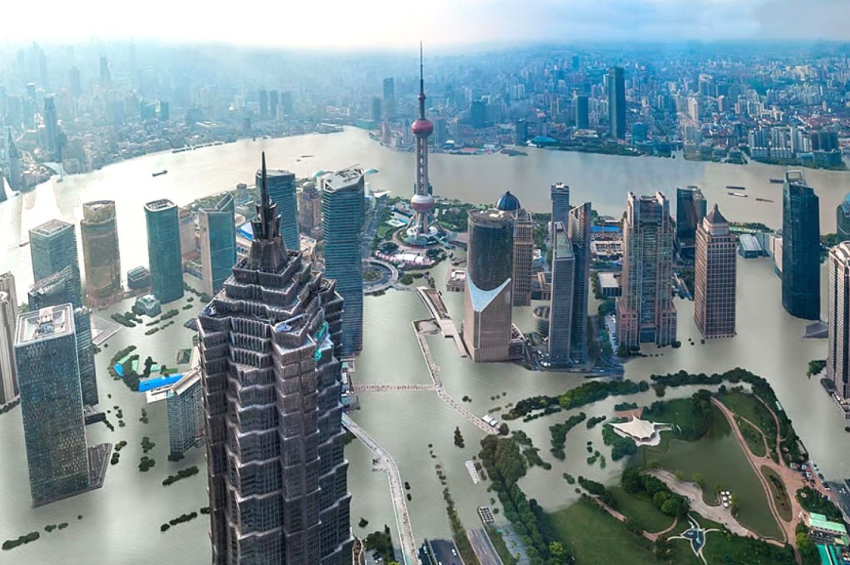Sea-level rise accelerating at fastest pace in 4,000 years, study warns
A new study published in Nature has found that modern sea-level rise is occurring faster than at any point in the past 4,000 years, beating all previous predictions. The report places China’s largest coastal cities at particular risk.
“The global mean sea-level rise rate since 1900 is the fastest rate over these last four millennia,” Yucheng Lin, a researcher at Rutgers University and Australia’s national science agency CSIRO, said in a statement.
According to the study, since 1900, global sea levels have risen by about 1.5 millimeters a year — a rate far exceeding any century-long period in the past four thousand years. The acceleration is driven by thermal expansion as oceans warm and by melting glaciers and ice sheets.
More to read:
[video] Remember Doomsday Glacier? A robot filmed trouble under it
“Getting warmer makes your ocean take up more volume,” Lin explained. “And the glaciers respond faster because they are smaller than the ice sheets, which are often the size of continents. We are seeing more and more acceleration in Greenland now.”
Vulnerable deltas
China’s vulnerability is compounded by the fact that many of its largest cities — including Shanghai, Shenzhen, and Hong Kong — are built on soft sediments in delta regions that naturally sink over time.
Deltas are great places, good for farming, fishing, urban development and naturally draw civilizations to them, Lin explained. However, they are really flat yet prone to human-caused subsidence, so sustained sea level rise could submerge them really fast.”
More to read:
The United States east coast is sinking rapidly
Subsidence, or the gradual sinking of land, is often intensified by human activities such as groundwater extraction. “We’ve been able to quantify the natural rate of sea level rise for this area,” Lin said. “But with human intervention, mostly groundwater extraction, we see subsidence even faster.”
In Shanghai, a megapolis in southern China with 30.5 million people, parts of the city sank by more than one meter during the 20th century due to excessive groundwater use — orders of magnitude faster than the current global sea level rise rate.
The global supply chain at risk
The combination of sinking land and rising seas dramatically heightens flood risk. Centimeters of sea level rise will greatly increase the risk of flooding in deltas. Not only are these areas important domestically, they’re also important internationally. If coastal risks happen there, the global supply chain will be vulnerable, the authors argue.

A street in Shanghai during flooding in July 2025. Credit: Getty Images
Still, as per the report, there is reason for cautious optimism. Cities such as Shanghai have taken steps to reduce subsidence by regulating groundwater extraction and reinjecting freshwater into aquifers. Shanghai now is not sinking that fast anymore as the authorities recognized the problem and started regulating their groundwater usage.
A global issue
While the study focuses on China, its implications extend worldwide. Many major cities — including New York, Jakarta, and Manila — are also built on low-lying coastal plains and face similar challenges.
More to read:
NASA mapped California cities that are sinking
Research by Virginia Tech and the U.S. Geological Survey revealed in 2024 that the eastern coast of the United States has been succumbing to the Atlantic Ocean at a pace between one and two millimeters per year. This region is where the population density is higher than in other parts of the country.
And earlier this year NASA mapped a troubling sinking of the Californian coastline into the Pacific – again due to the rising sea levels.
Tuvalu, a tiny archipelago nation in the Pacific Ocean is predicted to be entirely swallowed by waters by the turn of this century, among a dozen other territories.






